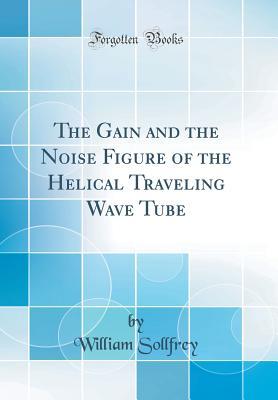Read The Gain and the Noise Figure of the Helical Traveling Wave Tube (Classic Reprint) - W Sollfrey | PDF
Related searches:
Noise Figure Measurement Methods and Formulas Maxim Integrated
The Gain and the Noise Figure of the Helical Traveling Wave Tube (Classic Reprint)
The Basics of Noise Figure Measurements for ATE - Advantest
Noise Figure, Noise Floor, and Receiver Compatibilities
Noise Power, Noise Figure and Noise Temperature
RELATIONSHIP BIETWEEN GAIN AND NOISE FIGURE OF AN
Noise and Noise Figure for Radar Receivers - OSTI.GOV
Noise Power, Noise Figure and Noise Temperature - CDN
Measurement of Gain and Noise Figure Spectrum - MATLAB & Simulink
Noise figure (nf) describes the amount of noise a component, amplifier, or an entire radio receive chain contributes to the rf signal being received.
What is noise gain, really? noise gain (in an op amp circuit) is the gain experienced by a small signal applied at the non-inverting (+) input. It is so called because noise is frequently stated as referred to the input, meaning the noise signal that would need to be present at the input to produce a specified noise output.
Noise figure is independent of gain, because a perfect amplifier that generates no noise would amplify noise and signal equally.
Using the equation given somewhere above, we must calculate the noise figure.
Experimental confmation is presented of the relationship between link gain and noise figure by varying the optical attenuation in an external modulation link.
For those into radio astronomy would know the significance of having ultra-low noise figures. Lower the noise figure, the more sensitive your receiver becomes. Noise figure is a unit of measure that tells us how much noise, for example, your amplifier is adding to the signal at its input.
Noise figure (nf) and noise factor (f) are measures of degradation of the signal- to-noise ratio (snr), caused by components in a signal chain.
Noise factor is always greater than unity as long as the measurement bandwidth is the same for the input and output.
The amplifier is to be built by adding a low-noise first stage with existing characteristics as follows: stage 2 has 20 db power gain and 3 db noise figure. Calculate the maximum noise figure (in db) that the first stage can have.
Nov 16, 2017 noise figure is a number by which the noise performance of an amplifier or a radio receiver can be specified.
The principle difficulty with noise-figure analysis arises when mixers are part of the signal chain. All real mixers fold the rf spectrum around the local oscillator.
It is a measure of degradation of signal's snr due to noise added by a circuit when the signal.
To use the gain method to measure the noise figure, the gain of the dut needs to be pre-determined.
The common parameter that specifies this is the system noise factor, which depends on system design and may vary with gain settings, temperature, and other.
The basic definition of noise figure is that it is the ratio f of the input s/n ratio to the output s/n ratio, and therefore represents the degradation of the s/n ratio caused by the system through which the signal passes. Noise figure is independent of gain, because a perfect amplifier that generates no noise would amplify noise and signal equally.
Noise figure is, therefore, a more general concept than noise-quieting used to indicate the sensitivity of fm receivers or ber used in digital communications. Once noise is added to the signal, subsequent gain amplifies signal.
Each measurement unit outputs two vector signals representing the spectrums of the gain and noise figure of the corresponding dut and those are inputted into two array plot (dsp system toolbox) blocks that plot the above properties versus frequency, comparing the unmatched and matched dut systems.
One must not only know the op amp voltage and current noise, but the exact circuit conditions—closed-loop gain, gain-setting resistor values, source resistance,.
Consider that the system has a gain and is the noise added by the system. With that, the noise figure is,� from the previous post on thermal noise, we know that noise power over bandwidth at temperature kelvin is,�.
Noise figure is a measure of the degradation in signal to noise ratio and it can be used in association with radio receiver sensitivity�� find out more���.
From previous equations we see that the noise of the output is the gain of the amplifier times the sum of the input noise and the noise of the amplifier. With these equations in mind we can now solve for k and n a using two equations and two unknowns.
Noise figure represents the degradation in signal/noise ratio as the signal passes through a device.
Com 1 introduction noise figure is a parameter that is specified in the data sheets of many devices present in the signal chain like the lna, mixer, amplifier, and active filters as a measure of the noise added by the device.

Post Your Comments: